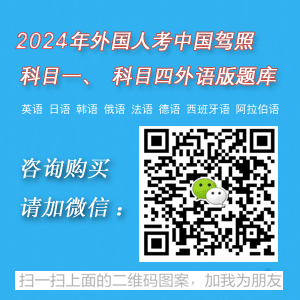2025濡ょ姷鍋熺换婵嬫嚈閹达箑鐐婂ù鐘差儌閺佸鏌i幘妤€妫岄崑鎾诲礃椤撶姵笑闂佸吋妲掔划楣冾敋閵忋垻鐭撻柟瀵稿У缁愭鈽夐幘顖氫壕闂侀潧妫旈懗鍫曪綖閺嶎厽鍎庢い鏂垮悑绾捐棄螞閻楀煫顏嗚姳闁秴瀚夊┑澶嬪F闂佺粯顨呴悧鐐垫濠靛纭€闁哄鐏濋悡鏇炩槈閺冩捇妾繝鈧导瀛樻櫖閻忕偞鍎抽·渚€鏌¢崼锝嗩仩濠⒀勵敘PP闂佹寧绋戦悧濠傦耿娓氣偓瀹曟垵顫濇0婵囨瘜缂傚倷绀侀崯鈺冨姬閸曨垱鏅悘鐐典紩娓氣偓楠炲繘鎮㈤悜鈺佷壕闁告劦鍘惧Σ鎼佹煕閺冨倸鏋欓柛蹇旓耿閺佸秵寰勫☉姘鳖槷闂佸憡鍤庨崝蹇涱敋濡ゅ懎绠i柡宥庡墮閺嬬姴鈽夐弮鈧刊浠嬵敋椤掑嫬绀夐柣妯夸含閻熸捇姊婚崼娑樼伄婵炲牊鍨甸銉╊敊鐠佸磭绠氶梺鎸庡喕閹凤拷

PDF闂佺粯顨呴悧濠囧春閸涙潙鐐婇柟鎯ф噽缁愶拷

婵炴垶妫戦梽鍕耿娴兼潙绠fい蹇撳缁傚牓鏌ㄥ☉铏

闂佸綊娼ч鍡椻攦閳х徆PP闂佽鎯屾禍婊兠瑰鈧弫宥夋晸閿燂拷
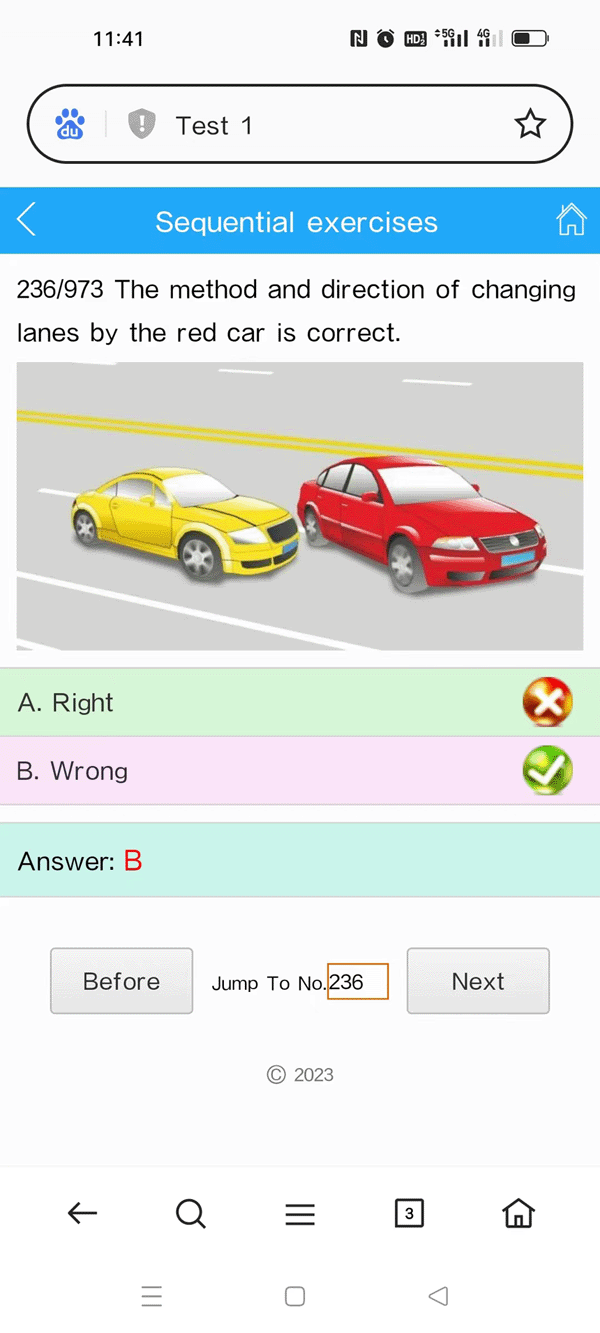
1. Whats the meaning of this sign?
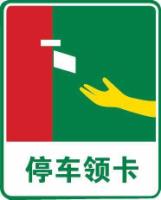
A. stop to get card
B. stop to pay
C. ETC lane
D. stop for inspection
Answer:A
2. Which kind of vehicle can be driven if the authorized vehicle applied for is small motor vehicle with automatic transmission?
A. low-speed truck
B. small motor vehicle
C. motorcycle
D. light truck with automatic transmission
Answer:D
3. If one drives an illegally assembled motorized vehicle, he should not only pay the fine, but also ________ .
A. be confiscated the driving license
B. be revoked the driving permission
C. be forced to recover the vehicle condition
D. be revoked the driving license
Answer:D
4. Whats the meaning of this sign?
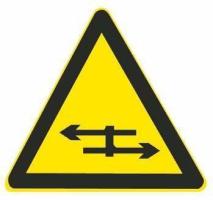
A. flat intersection
B. flat ring intersection
C. attention to interactive intersection
D. attention to separate intersection
Answer:D
5. When overtaking, the driver should ________ if the vehicle in front refuses to reduce speed or yield.
A. Follow closely and find chance to overtake again
B. Stop overtaking
C. Speed up and continue to overtake
D. Continuously honk and speed up to overtake
Answer:B
6. Whats the meaning of this sign?

A. no long time honking
B. honk discontinuously
C. reduce speed and honk
D. no honking
Answer:D
7. This sign indicates jammed section ahead and passing slowly.
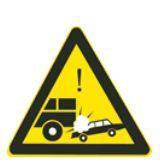
A. Right
B. Wrong
Answer:B
8. When a vehicle passes a curve on a mountain road, the driver should reduce speed, honk and stick to the right.
A. Right
B. Wrong
Answer:A
9. It lights to remind that engine coolant may be insufficient.

A. Right
B. Wrong
Answer:A
10. It lights to indicate that ______
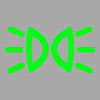
A. the head and tail fog lights are turned on
B. front and rear width lights are turned on
C. the head lights are turned on
D. the hazard lights are turned on
Answer:B
11. Traffic lights are divided into red, green and yellow light.
A. Right
B. Wrong
Answer:A
12. Stopping temporarily on the road should not obstruct the passing of other vehicles and pedestrians.
A. Right
B. Wrong
Answer:A
13. When discovering a road congestion ahead, the correct way to deal with this situation is to _______.
A. Continue to weave through
B. Find space and overtake one vehicle after another
C. Honk to indicate the vehicle in front to speed up
D. Stop and wait in line
Answer:D
14. Before a vehicle enters an intersection, the driver should reduce speed, observe and make sure it is safe to do so.
A. Right
B. Wrong
Answer:A
15. The age should be 18 ~ 70 years old when applying for the driving license of small vehicle or three-wheeled automobile.
A. Right
B. Wrong
Answer:A
16. When a vehicles turns, it should do so on the right side and refrain from occupying the lane of the other party. The left turn should be gentle and the right turn should be sharp.
A. Right
B. Wrong
Answer:A
17. If a motorized vehicle causes a traffic accident on the expressway and cannot to run normally, the vehicle should be towed by a rescue vehicle or a tow truck.
A. Right
B. Wrong
Answer:A
18. When the traffic conditions at an intersection are complicated, the driver should be patiently waiting instead of taking chance.
A. Right
B. Wrong
Answer:A
19. The wrong measure to avoid tire blowout is to _________.
A. Reduce tire pressure
B. Check the tires regularly
C. Remove objects from tire tread grooves in a timely manner
D. Replace the tire that has cracks or deep cuts
Answer:A
20. How to pass when encountering this situation at the intersection?

A. make sure it is safe to pass
B. turn right and speed up to pass
C. speed up and pass straight
D. turn left and speed up to pass
Answer:A
21. Whats the meaning of the double white solid lines in far front of the intersection?
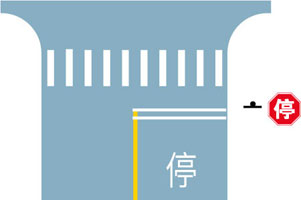
A. stopping and yield line
B. slowdown and yield line
C. left-turn waiting line
D. waiting to run line
Answer:A
22. Rear fog light lights when the light switch is at this position.

A. Right
B. Wrong
Answer:A
23. When driving a small vehicle downhill, the driver may coast down by stopping the engine.
A. Right
B. Wrong
Answer:B
24. When the road maintenance vehicle and the engineering vehicle are on duty, the passing vehicles should avoid with care.
A. Right
B. Wrong
Answer:A
25. It lights to indicate that ______
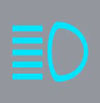
A. the head fog light is turned on
B. the low beam light is turned on
C. the high beam light is turned on
D. the tail fog light is turned on
Answer:C




